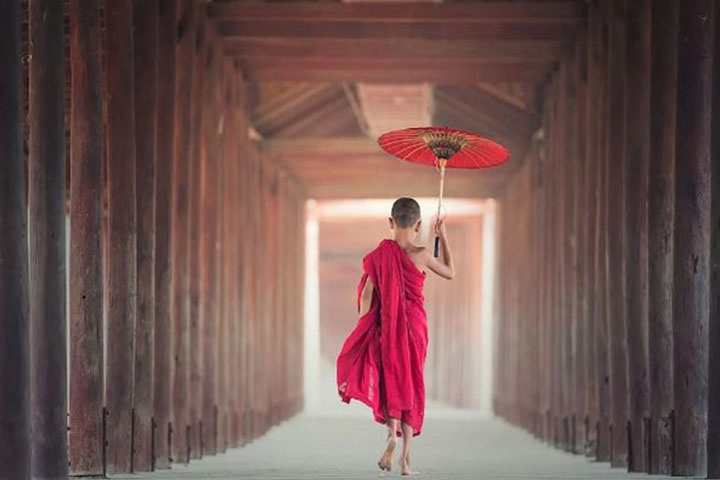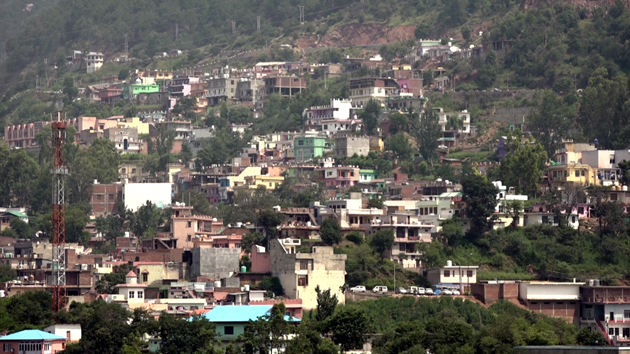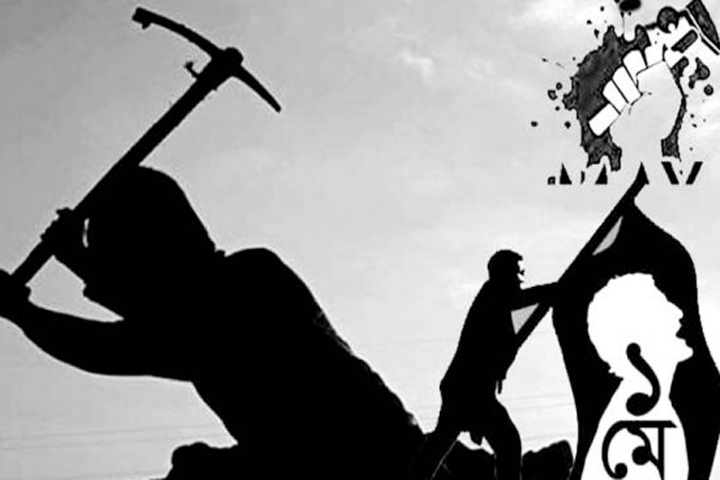Chenani - The quaint historical town of J&K
Built on the banks of the sacred Suryaputri (Tawi River) which originates in the lap of the Kailash Kund glacier, the belief is that Suryaputri is Saturn's sister, whose presence relieves all from the maladies of life, can be confirmed at this town where every breath of air gives one power and healing energy. Historian account suggests the name 'Chenani' is derived from Chanderi (Bundelkhand), where the ruling line of Chenani came from between 8th to 9th century.Jammu and Kashmir's Chenani region is a historical gamut. It has witnessed the rise and fall of many great empires whose glory shines through the city walls, the palaces, and the much revered heritage sites that Chenani is famous for. The town of Chenani is located in the Udhampur district of the Union Territory.
Amongst the quondam 22 Dogra states, Chenani was the oldest and dearest to its rulers. It is believed to be erected by Chandel Dynasty Kings presently known as Anthal Rajputs who came from Kot Kalhur, Bilaspur Himachal Pradesh. Once upon a time this region used to be the capital of a small Kingdom till 1822, when Raja Gulab Singh annexed it, initially to the Lahore Empire and later to the Jammu state. Born in 1792, Maharaja Gulab Singh became the commander of a Dogra cavalry contingent.
Chenani enjoyed a continuous single dynasty rule from 850 AD to 1947, the only Principality in J&K to achieve this status. It also used to be among the richest Jagirs of the region having been subordinate to the Mughals and Jammu. George Forester, a European traveller, revealed the annual income of Chenani in 1783 was Rs 1 Lakh! By 1945 it dropped to Rs 65,800.
While J&K has a history of Kings who ruled with an iron fist, Chenani was excused; the relationship between the Kings and their subjects was very informal. It is said that the Kings of Chenani were father figures to its people. Even the people accused of crime could roam freely, carry out their routine work, and appear in court as per their convenience. Chenani's King was also the final authority on the State Subject Certificates (PRCs) and he had the power to collect Toll and Entry Tax for entry in his region.
Chenani in the present day is most famous for its grand Shiva temple - Sudhmahadev. Back in the day Sudhmahadev was the summer camp office for the Kings of Chenani. Today the picturesque Sudhmahadev invites devotees of Lord Shiva for an annual four-day long major cultural event known as Kudd of Sudhmahadev.
The Centre is working on reviving heritage sites like temples which have been in a neglected state for a long time. Chenani's temples have unique architecture owing to its strong religious beliefs. Two notable temples among these are the - Jalandhra Devi Mata near Laddan Kotli Fort which was constructed by the early Chandel Kings in honour of their Kuldevi, Mata Jalandhara Devi; and Naina Devi Temple in the upper heavens of Mantalai hills which dates to the medieval period. Other ancient temple sites of Chenani are situated in Gouri-Kund, Gau-Karan, Mantalai, Benisang, Mandir-Dushala, Haridwar, and Buddha Kedarnath.
Built by Raja Dayal Chand in the 1820s, Chenani houses the grand Kotli Fort in Laddan (Udhampur) which has been declared as a protected monument and is undergoing renovation. The Kings enjoyed exhibiting their luxurious lifestyle and grandeur by building monuments and palaces in and around the capital city of Chenani. One such palace was the Singh-Garh Palace, that later gained popularity being the epicentre of the famous Hindi movie 'Jaani-Dushman'. The government is building an extensive plan to reconstruct and conserve such establishments that lost value over time to bring new tourist destinations in limelight and reignite the UT's passion for their glorious history.
Chenani's beauty lies in its history, pilgrimage sites, and quaint picnic spots. J&K's popular picnic destination, Patintop, is connected to Chenani with a cable car. Thanks to its cool climate, Chenani is also a giant producer of high quality vegetables and fruits, besides milk and milk products such as cheese, Kalari, Khoya, etc., which are in high demand in the region.
In the wake of spiritual tourism in the country, the Chenani-Sudhmahadev-Khellaini road project is in full swing, granting greater access to Sudhmahadev, Gauri Kund, and Mantalai temples to people across India. It will help launch J&K to the rest of the country. Boost in employment and trade will uplift the socio-economic standard of the region. The National Highways and Infrastructure Development Corporation Limited (NHIDCL), owned by the Ministry of Road Transport and Highways, are also eager to bring Udhampur in limelight as construction for an International Yoga Centre at Mantalai is underway.
Today the region's greatest attraction is the all-weather longest bi-directional tunnel in Asia standing at 9.28 km -- the Chenani-Nashri tunnel. It has reduced the distance of Jammu-Srinagar National Highway by about 30 Kms and travelling time by about two hours. Lately J&K Lt. Governor Manoj Sinha has announced that Kashmir will be connected to Kanyakumari by train by the end of 2022.
The UT is going through a series of paramount developments after the revocation of Article 370, ensuring a stable ecosystem that rewards hard work and the products of the people.
Source: IANS
12 Feb 2022,18:13
















 Live Tv
Live Tv




